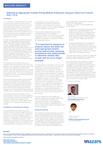Selecting an Appropriate Transfer Pricing Method; Putting the Taxpayer’s Best Foot Forward (Part 1 of 2)
It is no news that transfer pricing is now an area that requires keen attention and the need for robust transfer pricing documentation cannot be overemphasized. In keeping a robust transfer pricing documentation, it is very crucial that taxpayers select the most appropriate transfer pricing methods in line with the guidelines set out by the local transfer pricing regulations and the Organization for Economic Cooperation and Development (OECD).
As seen in the first Nigeria transfer pricing case between the Federal Inland Revenue Service (FIRS) and Prime Plastichem Nigeria Limited (PPNL), FIRS disregarded the transfer pricing methods adopted by PPNL and raised an assessment of ₦1.74 billion after a perusal of the transfer pricing documentation. The Tax Appeal Tribunal (TAT) disregarded the appeal of PPNL and ruled in favour of the FIRS by upholding the methods suggested as appropriate for the determination of the arm’s length price. PPNL’s appeal was disregarded on the ground that it could not prove its case to the satisfaction of the tribunal.
The major issue in this case is the use of a suitable transfer pricing method. This shows how important it is for taxpayers to properly assess and select the most appropriate transfer pricing methods when analyzing transactions with related parties to determine whether they comply with the arm’s length principle. This will be a stronghold for taxpayers in the event of a transfer pricing review or audit by the tax authority.
There are basically five transfer pricing methods which can be classified as the traditional and transactional methods. The traditional methods comprise of the Comparable uncontrolled price (CUP) method, Resale price method and Cost-plus method while the transactional methods comprise of the Transactional Net Margin Method (TNMM) and the Transactional Profit Split Method
Comparable uncontrolled price method
The Comparable Uncontrolled Price (CUP) method compares the price charged for goods or services in a controlled transaction (related party transaction) to the price charged for goods or services in a comparable uncontrolled transaction (third party or independent transaction) under comparable circumstances. The key element here in this comparability study is the similarity of the comparable parties, the similarity of the terms of the transactions and the similarity of the comparable circumstance surrounding the transactions. These elements must exist to a reasonable degree in order to enable an adequate basis for comparison and reliance.
Prices could be compared using an internal comparable approach (a transaction or transactions between the controlled entity and an independent entity) or an external comparable approach (a transaction or transactions between two independent entities).
As stated earlier, for comparison to occur in both approaches, the circumstances surrounding the transactions must be similar and meet the comparability factors as outlined in the OECD guidelines. If there are differences resulting from the comparison, it may indicate that the related party transactions are not at arm’s length and the price charged in the uncontrolled transaction may be applied as the price in the controlled transaction. It should be noted that the biggest pitfall of entities in the application of the CUP method is in their selection of comparables that meet the comparability factors of the OECD Guidelines. Performing a proper functional and risk analysis, using the right benchmarking database and engaging transfer pricing experts are some of the ways in which these pitfalls can be overcome.
The CUP method is the most reliable and preferred transfer pricing method in determining the arm’s length nature of related party transactions, however, it is only applicable where there are sufficient comparable data. In practice, finding these suitable comparables could be very challenging.
Resale Price Method
The resale price method is based on the price at which goods purchased from a related party is resold to an independent entity. The resale price is reduced with a gross margin (the resale price margin) determined by comparing gross margins in comparable uncontrolled transactions. What is left after subtracting the resale price margin and adjusting for other costs associated with the purchase of the goods can be regarded as an arm’s length price for the controlled transaction between the related parties.
In practice, it is easier to use the resale price method where:
- the goods are not further processed, and the reseller will not add material value to the goods purchased from the related party and sold to the independent entity. Where the goods are further processed before reselling to the independent entity, it will be difficult to arrive at the arm’s length price using this method.
- the goods purchased from the related party are sold to the independent party within a short period, because the longer the inventory holding period, the more likely it would be that other factors such as the exchange rate, inflation rate and other changes in the market might affect the resale price margin.
The resale price method is suitable for entities that engage in sales and distribution to independent parties as well as marketing operations.
One of the pitfalls of the resale price method is that it requires the existence of comparable controlled and uncontrolled transactions and the availability of gross margin data on a transaction-by-transaction basis. Also, companies might classify expenses differently which would likely result in different gross margins thus making comparability difficult. One way to avoid this pitfall is by carrying out appropriate adjustments to the data used in calculating the resale price margin in order to ensure that the same type of expenses is used to determine the gross margin.

